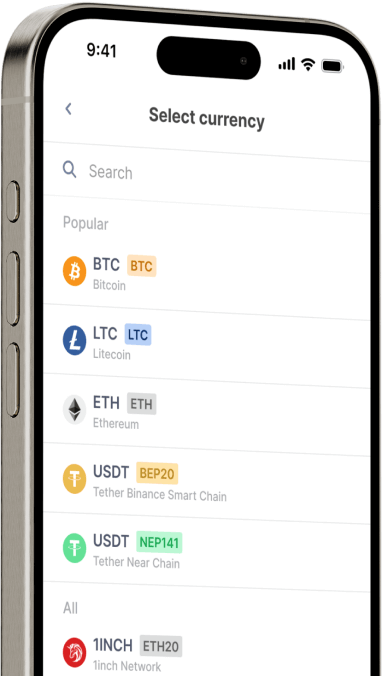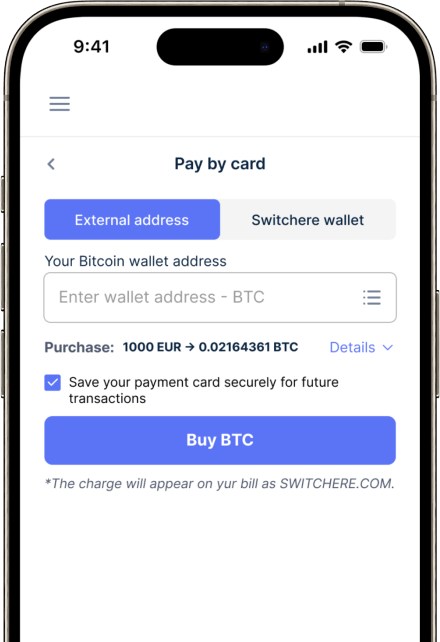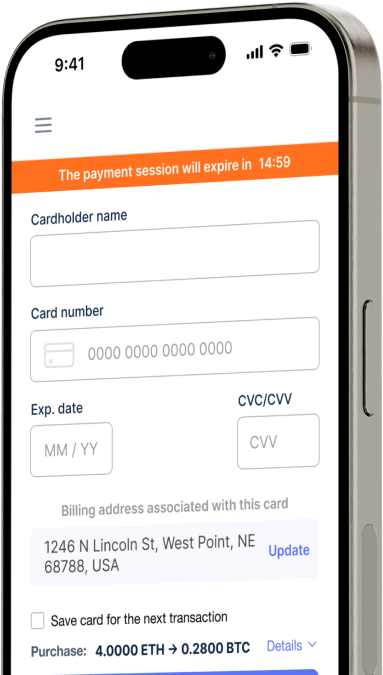Converteer
Swiss Franc (CHF) naar Dai (DAI) direct
Koop Dai (DAI) met Swiss Franc (CHF) gemakkelijk bij Switchere en profiteer van snelle, veilige transacties.
Over
Dai (DAI)
DAI (DAI) is een baanbrekende gedecentraliseerde stablecoin die soft-pegged is aan de Amerikaanse dollar en die werkt op de Ethereum blockchain als een ERC-20 token. Het primaire doel is om een censuurbestendig en transparant digitaal activum te bieden dat een stabiele waarde behoudt en een cruciale bouwsteen vormt voor het gedecentraliseerde financiële (DeFi) ecosysteem. DAI wordt bestuurd door de MakerDAO gemeenschap via het MKR governance token en de stabiliteit wordt bereikt door een geavanceerd systeem van over-collateralization. Gebruikers genereren DAI door goedgekeurde crypto-activa, zoals ETH of WBTC, vast te zetten in smart contracts die bekend staan als Maker Vaults (voorheen Collateralized Debt Positions of CDP's). Dit proces zorgt ervoor dat elke DAI in omloop wordt ondersteund door een grotere waarde aan onderpand, waardoor volatiliteitsrisico's worden beperkt.
De kerntechnologie vertrouwt op de smart contract-mogelijkheden van Ethereum om deze kluizen te beheren, liquidaties te automatiseren als de waarde van het onderpand onder een bepaalde drempel zakt en de koppeling te handhaven door middel van verschillende stabiliteitsmechanismen, waaronder stabiliteitsvergoedingen en de Dai-spaarrente (DSR). Met de DSR kunnen DAI-houders direct on-chain rendement verdienen op hun bezit. De functie van DAI's utility token is voornamelijk als stabiel ruilmiddel, rekeneenheid en waardeopslag binnen talloze DeFi-toepassingen, waaronder leenprotocollen, gedecentraliseerde uitwisselingen en strategieën voor opbrengstlandbouw. Als een van de meest breed geïntegreerde crypto-gebaseerde stablecoins is DAI een fundamenteel element van de Web3-infrastructuur, dat peer-to-peer transacties en complexe financiële instrumenten mogelijk maakt zonder afhankelijk te zijn van traditionele tussenpersonen.
Koop andere 150+ cryptocurrencies voor Swiss Franc (CHF)
Andere munten voor Swiss Franc (CHF)
-
CHF naar ZRX
-
CHF naar 1INCH
-
CHF naar AAVE
-
CHF naar ACH
-
CHF naar ALGO
-
CHF naar TLM
-
CHF naar ANKR
-
CHF naar APE
-
CHF naar NFT
-
CHF naar API3
-
CHF naar APT
-
CHF naar ARPA
-
CHF naar AUDIO
-
CHF naar AVAX
-
CHF naar AVAX
-
CHF naar AXS
-
CHF naar BADGER
-
CHF naar BAL
-
CHF naar BNT
-
CHF naar BAT
-
CHF naar BNB
-
CHF naar BSW
-
CHF naar BSV
-
CHF naar BLUR
-
CHF naar BONE
-
CHF naar CTSI
-
CHF naar CELR
-
CHF naar CELO
-
CHF naar CEL
-
CHF naar LINK
-
CHF naar CHZ
-
CHF naar CHR
-
CHF naar C98
-
CHF naar COMP
-
CHF naar CFX
-
CHF naar PEOPLE
-
CHF naar CVX
-
CHF naar ATOM
-
CHF naar CTC
-
CHF naar CRV
-
CHF naar DAI
-
CHF naar DASH
-
CHF naar MANA
-
CHF naar DENT
-
CHF naar DGB
-
CHF naar DYDX
-
CHF naar XEC
-
CHF naar EOS
-
CHF naar ETC
-
CHF naar ENS
-
CHF naar ETHW
-
CHF naar FET
-
CHF naar FIL
-
CHF naar FLOKI
-
CHF naar GALA
-
CHF naar GNO
-
CHF naar ONE
-
CHF naar HBAR
-
CHF naar HOT
-
CHF naar HOOK
-
CHF naar ICX
-
CHF naar ILV
-
CHF naar IMX
-
CHF naar INJ
-
CHF naar ICP
-
CHF naar IOST
-
CHF naar IOTX
-
CHF naar JASMY
-
CHF naar JST
-
CHF naar KAVA
-
CHF naar KCS
-
CHF naar KSM
-
CHF naar KNC
-
CHF naar LDO
-
CHF naar LQTY
-
CHF naar LPT
-
CHF naar LOOKS
-
CHF naar LRC
-
CHF naar LUNA
-
CHF naar MKR
-
CHF naar MASK
-
CHF naar EGLD
-
CHF naar ALICE
-
CHF naar NEAR
-
CHF naar XEM
-
CHF naar NEXO
-
CHF naar NOT
-
CHF naar NMR
-
CHF naar OKB
-
CHF naar OMG
-
CHF naar ONT
-
CHF naar EDU
-
CHF naar OP
-
CHF naar OGN
-
CHF naar CAKE
-
CHF naar PAXG
-
CHF naar PENDLE
-
CHF naar DOT
-
CHF naar POL
-
CHF naar QTUM
-
CHF naar QNT
-
CHF naar RDNT
-
CHF naar XRD
-
CHF naar RVN
-
CHF naar REN
-
CHF naar RSR
-
CHF naar RLC
-
CHF naar RPL
-
CHF naar SFP
-
CHF naar SHIB
-
CHF naar SKL
-
CHF naar SXP
-
CHF naar STND
-
CHF naar STG
-
CHF naar XLM
-
CHF naar GMT
-
CHF naar STORJ
-
CHF naar STMX
-
CHF naar SUSHI
-
CHF naar SNX
-
CHF naar USDT (Polygon)
-
CHF naar USDT (AVAC)
-
CHF naar USDT (BEP20)
-
CHF naar USDT (ERC20)
-
CHF naar USDT (SPL)
-
CHF naar USDT (NEP141)
-
CHF naar USDT (FA2)
-
CHF naar USDT (TRC20)
-
CHF naar USDT (JETTON)
-
CHF naar XTZ
-
CHF naar GRT
-
CHF naar SAND
-
CHF naar TFUEL
-
CHF naar THETA
-
CHF naar RUNE
-
CHF naar TON
-
CHF naar TUSD (BEP20)
-
CHF naar TUSD (TRC20)
-
CHF naar TWT
-
CHF naar UOS
-
CHF naar UMA
-
CHF naar UNI
-
CHF naar USDC (Polygon)
-
CHF naar USDC (SPL)
-
CHF naar USDC (OP)
-
CHF naar USDC (BEP20)
-
CHF naar USDC (AVAC)
-
CHF naar USDC (ARB)
-
CHF naar USDC (ERC20)
-
CHF naar VET
-
CHF naar VRA
-
CHF naar WAXP
-
CHF naar WOO
-
CHF naar WLD
-
CHF naar WBTC
-
CHF naar WMINIMA
-
CHF naar XDC
-
CHF naar YFI
-
CHF naar YGG
-
CHF naar ZIL
Hoe Dai (DAI) kopen
Veelgestelde vragen
-
Wat is de betekenis van het CHF/DAI-handelspaar in het crypto-ecosysteem?
Het CHF/DAI-paar vertegenwoordigt een directe fiat on-ramp van de Zwitserse Frank naar een belangrijke gedecentraliseerde stablecoin. De betekenis ervan ligt in het bieden van toegang tot het gedecentraliseerde financiële (DeFi) ecosysteem zonder afhankelijk te zijn van gecentraliseerde stablecoin-uitgevers. Gebruikers kunnen CHF omzetten in DAI, een ERC-20-token gestabiliseerd door het Maker Protocol via een systeem van overcollateralisatie, waardoor ze kunnen interageren met een breed scala aan op smart contracts gebaseerde applicaties.
-
Hoe zorgt het overcollateralisatiemodel van DAI voor stabiliteit in vergelijking met fiat zoals CHF?
Terwijl de stabiliteit van de CHF wordt ondersteund door de Zwitserse Nationale Bank, wordt de stabiliteit van DAI algoritmisch op de blockchain gehandhaafd. DAI wordt gecreëerd wanneer gebruikers andere crypto-activa (zoals ETH of WBTC) als onderpand vastzetten in een Maker Vault, en ze moeten onderpand storten dat aanzienlijk meer waard is dan de DAI die ze genereren. Deze overcollateralisatie zorgt ervoor dat zelfs met de volatiliteit van de cryptomarkt de waarde achter DAI voldoende blijft, en de koppeling aan de USD wordt gehandhaafd door geautomatiseerde liquidaties van slimme contracten als de waarde van het onderpand te laag wordt.
-
Hoe kan ik mijn DAI veilig opslaan nadat ik het met CHF heb gekocht?
Voor optimale beveiliging moet u zelfbeheer toepassen door uw DAI van de exchange te verplaatsen naar een non-custodial digitale portemonnee waar u de privésleutels beheert. Opties zijn onder meer browsergebaseerde portemonnees (zoals MetaMask), mobiele portemonnees, of voor het hoogste beveiligingsniveau, een hardware wallet. Het opslaan van digitale activa in uw eigen portemonnee beschermt ze tegen exchange-specifieke risico's zoals hacks of bevriezingen en geeft u directe toegang tot DeFi-applicaties en de Dai Savings Rate (DSR).
-
Wat zijn de gangbare methoden om DAI te kopen met een Zwitserse bankrekening?
De meest gebruikelijke methode is het gebruik van een gereguleerde cryptocurrency exchange die CHF-stortingen ondersteunt. Normaal gesproken voltooi je de KYC/AML-naleving en financier je vervolgens je account via een SEPA-overboeking of een standaard Zwitserse bankoverschrijving vanaf je Zwitserse bankrekening. Zodra het CHF-geld is bijgeschreven, kun je een kooporder voor DAI plaatsen in het orderboek van de exchange. Sommige platforms bieden mogelijk ook directe aankoopopties via een pinpas aan.
-
Welke soorten kosten kan ik verwachten bij het omwisselen van CHF naar DAI?
Er zijn verschillende mogelijke kosten. Ten eerste kan uw bank kosten in rekening brengen voor de SEPA- of bankoverschrijving naar de exchange. Ten tweede heeft de cryptocurrency exchange zijn eigen kostenstructuur, inclusief stortingskosten (vaak nul voor SEPA), handelskosten (een percentage van de handelswaarde) en opnamekosten. Ten slotte betaalt u, wanneer u uw DAI van de exchange naar een non-custodial digitale portemonnee verplaatst, een blockchain-transactiekost, bekend als een gas fee op het Ethereum-netwerk, die in ETH wordt betaald en varieert met de netwerkcongestie.
-
Kan ik de Dai Savings Rate (DSR) gebruiken om rendement te verdienen na het omwisselen van mijn CHF?
Ja, absoluut. Zodra je DAI hebt verkregen en in een compatibele non-custodial portemonnee bewaart, kun je interageren met de slimme contracten van het Maker Protocol om je DAI vast te zetten in het Dai Savings Rate (DSR) contract. Hierdoor kun je een variabel rendement direct on-chain verdienen, afkomstig van stabiliteitskosten die worden betaald door gebruikers die DAI genereren uit Maker Vaults. Het is een kernfunctie van het MakerDAO-ecosysteem en biedt een native rendement voor DAI-houders.




